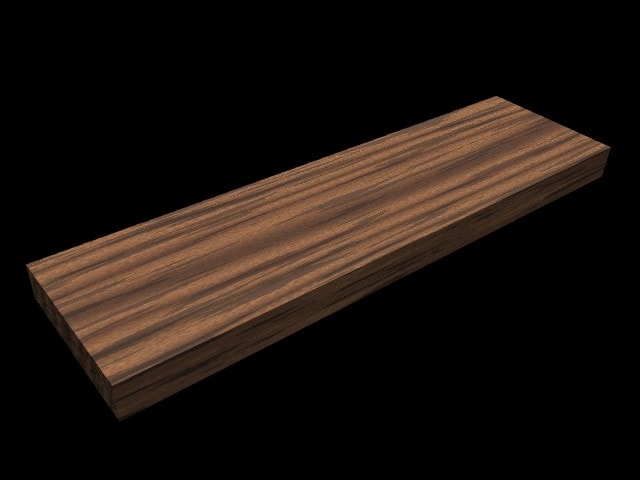What Is Wenge Wood? Properties, Characteristics & Uses
-

- Last updated:

Wenge wood comes from two similar trees found in Central Africa. The tree is considered endangered and its timber is very difficult to get hold of, also making it an expensive wood. However, it is sought after because it is resistant to termites while being strong and hardwearing. It is used primarily in wood paneling, parquetry, and cabinet making, although alternatives are more commonly used because of the scarcity of the wood and its resulting cost.

About Wenge Wood
Wenge is actually a brand name for a type of timber that comes from the Millettia laurentii tree of Central Africa. It can grow to nearly 30 meters in height and have a trunk diameter of approximately 1 meter.
It is popular to work with because, despite being somewhat resistant to hand and machine tools, it is a very strong wood with an attractive grain. It is also resistant to termites, and its natural oils mean that it does not need to be treated.
It is on the International Union for Conservation of Nature (IUCN) red list as an endangered species of tree and has become endangered because of the destruction of its natural habitat and because its use has made it so popular that it has been heavily exploited.
Benefits of Wenge Wood as a Timber
- Attractive – Wenge wood is used in the construction of veneer and paneling, as well as to construct musical instruments and cabinetry. It is chosen for its strength but also for its attractive finish. It is described as having a partridge wood pattern and wenge wood has both light and dark patinas.
- Durable and Hardy – It is a very durable wood, resistant to termites, and it is both structurally strong and difficult to break. This is a benefit once the wood has been worked, although it can be a hindrance once a piece is finished, as discussed below.
- High Density – The wood is very dense. This means that it is moisture resistant because the tight pores do not easily take on moisture. Even if moisture is present on the wood, it is unlikely to seep into the grain.

Wenge Wood Drawbacks
- It Is Mildly Toxic – Although some people regularly use the wood and experience no negative effects, and it has been used as a medicinal plant for generations, wenge wood can cause abdominal cramps, skin irritation, and even affects the nervous system in rare cases.
- Blunts Tools – The high density and strength of the wood mean that it can create durable and hardwearing items, but it also blunts tools and means that it is virtually unworkable using hand tools.
- High Price – Wenge wood is an endangered species of wood and very difficult to come by, while still being popular for furniture and flooring construction. This means that, when it is available, it has a very high cost that makes it unappealing for everyday use.
In Conclusion
Wenge wood is considered an endangered species, but it is still a highly sought-after timber for cabinetry, parquetry, and flooring. It is very dense and strong, and it has an attractive partridge pattern. However, it is difficult to work, whether using hand tools or machine tools. Once finished, though, the wood is resistant to termites and retains its strength even when moist, thanks to its density.
Featured Image Credit: Wenge Wood (Image Credit: SoylentGreen, Wikimedia Commons CC BY-SA 3.0)
Contents

